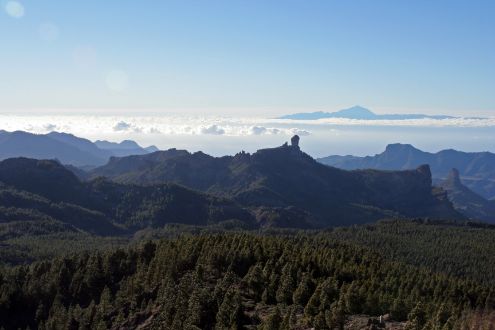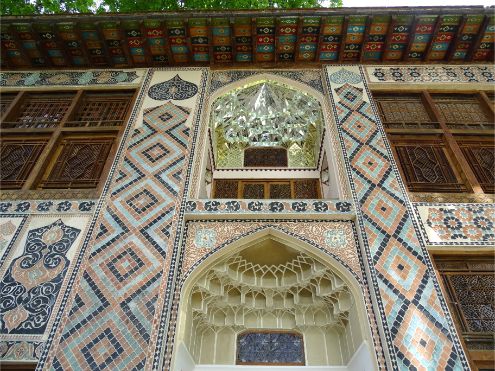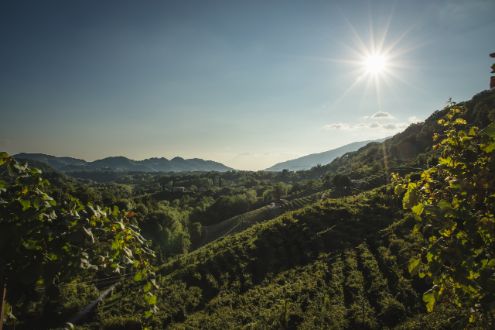Following the World Heritage Committee’s conference in July 2019, seven new sites in Europe have been inscribed onto UNESCO’s list to ensure these locations of natural and cultural importance are conserved. Why not incorporate a visit to one of these on your next holiday?
Risco Caido and the Sacred Mountains, Gran Canaria, Spain

Image Credit: Tony Hisgett
The Sacred Mountains can be found in the centre of Gran Canaria; its vast area comprises of cliffs, ravines, and volcanic formations with rich biodiversity. The large expanses of pine forests offer a protective habitat to two native bird species: the blue finch of Gran Canaria and the woodpecker.
The landscape is also home to a large number of troglodyte settlements, which include cult cavities and two sacred temples. Seasonal ceremonies were held in these temples and they are thought to be linked to a possible cult linked to the stars and Mother Earth.
One of these settlements, Risco Caido, is made up of 21 caves dug out of the volcanic ground. It was only abandoned in the mid-20th century, which shows the survival of pre-Hispanic ways of life into recent times.
The almogarén, or sanctuary, of the settlement is an excavated cave with a circular floor and dome. This structure is significant in that it has a channel that has been created to project the sun’s rays or the full moon onto one of the walls in the main chamber, making it particularly significant for the solstice and equinox.
Jodrell Bank Observatory, Cheshire, UK

Image Credit: tom_bullock
Founded in 1945 with surplus army radar equipment, Jodrell Bank Observatory was pioneering in a completely new science: the exploration of the Universe using radio waves instead of visible light. This opened up humanity’s understanding of undiscovered things, including quasars, pulsars, and gravitational lenses, and to see back in time almost 14 billion years to the Big Bang.
The giant Lovell Telescope with its huge white paraboloid bowl is an internationally renowned landmark at the Observatory; it has been probing the depths of space since 1957 and remains to this day one of the biggest and most powerful radio telescopes in the world.
The Jodrell Bank site is the only remaining place in the world that retains history of the extraordinary science of radio astronomy. Indeed, the public can get involved with year round exhibitions and events; 185,000 visitors, including 27,000 school children, come to the site every year to learn about this iconic site.
The Historic Centre of Sheki with the Khan’s Palace, Azerbaijan

Image Credit: Adam Jones
The city of Sheki, 300 km to the north of Baku, sits at the foot of the Greater Caucasus Mountains and is split in two by the Gurjana River; the older northern part is built on the mountain, the southern part extends into the river valley. The historic centre is characterised by houses with traditional architecture and high gabled roofs.
The city was located along the Silk Road on the crossroads of Europe and Asia, and the Khan Palace and merchant houses reflect the wealth generated from silk production during the 18th and 19th centuries.
The Khan Palace itself has a spectacularly ornate interior and exterior, with Russian wood, French stained glass, Ottoman ceramics, and Iranian mirror-work all featuring heavily in this summer residence. Indeed, the building’s facade showcases a type of local mosaic of coloured glass set in a wooden lattice - shebeke - which is constructed without nails or glue. Examples of this handicraft can also be found at the bazaar, as can locally produced silk scarves.
Le Colline del Prosecco di Conegliano e Valdobbiadene, Italy

Image Credit: Niklas Flindt
The hills of Conegliano and Valdobbiadene form an excellent example of how humankind works with nature to bring about a unique cultural landscape which produces one of the most famous sparkling wines in the world today: Prosecco. Indeed, this northeastern Veneto region has seen its international exports rise by a record 21% in 2019.
The vine-growing landscape is characterised by hogback hills, ciglioni (small plots of vines on narrow grassy terraces), forests, villages, and farmland. The use of these ciglioni has created the distinctive effect of rows of parallel, vertical lines around the slopes. Together with the bellussera technique of training the vines, the wines produced in this aesthetically pleasing countryside benefit from the unique terroir of the area.
Title Image Credit: Alun Salt (Image Cropped)